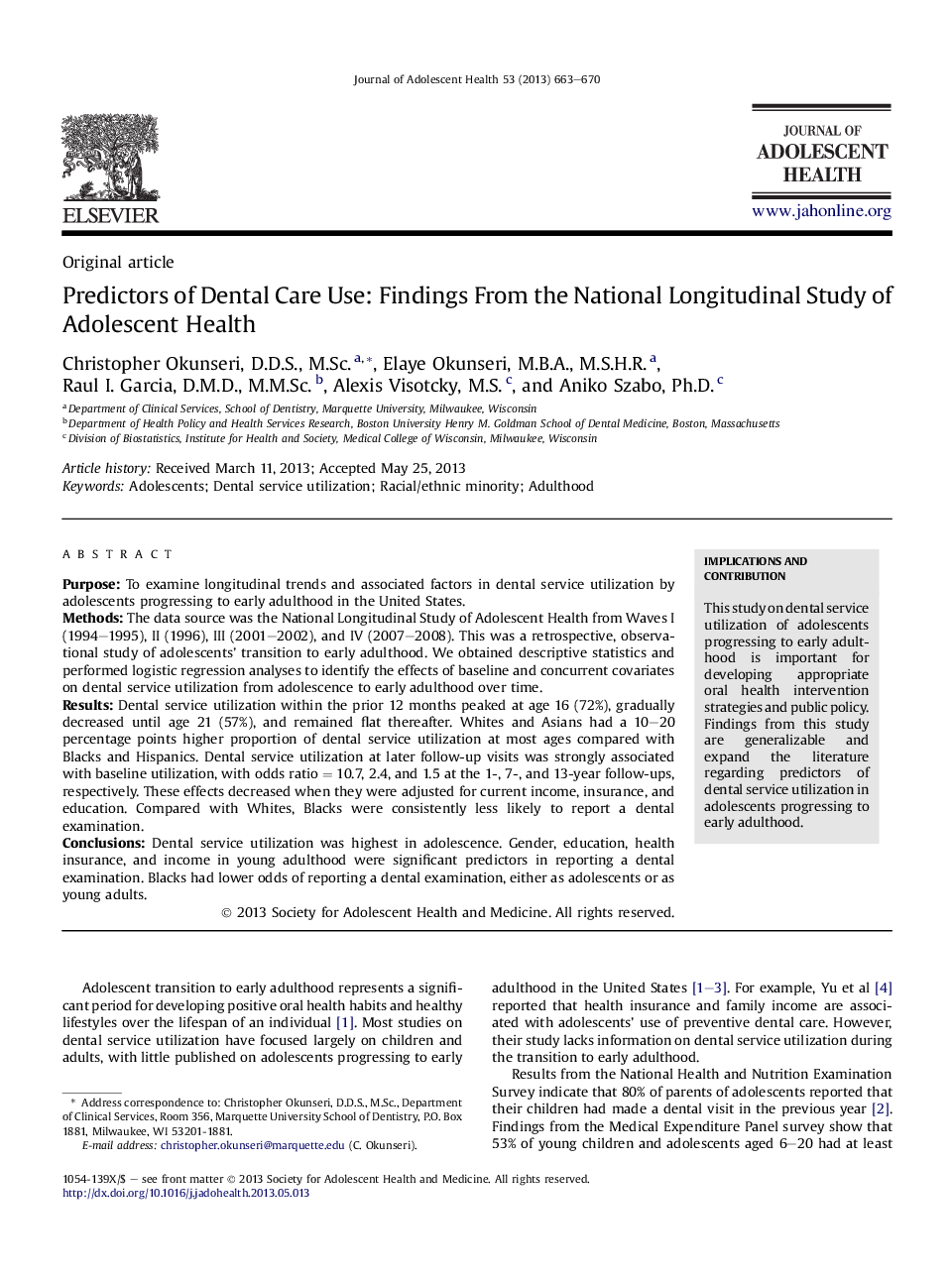| Article ID | Journal | Published Year | Pages | File Type |
|---|---|---|---|---|
| 1079119 | Journal of Adolescent Health | 2013 | 8 Pages |
PurposeTo examine longitudinal trends and associated factors in dental service utilization by adolescents progressing to early adulthood in the United States.MethodsThe data source was the National Longitudinal Study of Adolescent Health from Waves I (1994–1995), II (1996), III (2001–2002), and IV (2007–2008). This was a retrospective, observational study of adolescents' transition to early adulthood. We obtained descriptive statistics and performed logistic regression analyses to identify the effects of baseline and concurrent covariates on dental service utilization from adolescence to early adulthood over time.ResultsDental service utilization within the prior 12 months peaked at age 16 (72%), gradually decreased until age 21 (57%), and remained flat thereafter. Whites and Asians had a 10–20 percentage points higher proportion of dental service utilization at most ages compared with Blacks and Hispanics. Dental service utilization at later follow-up visits was strongly associated with baseline utilization, with odds ratio = 10.7, 2.4, and 1.5 at the 1-, 7-, and 13-year follow-ups, respectively. These effects decreased when they were adjusted for current income, insurance, and education. Compared with Whites, Blacks were consistently less likely to report a dental examination.ConclusionsDental service utilization was highest in adolescence. Gender, education, health insurance, and income in young adulthood were significant predictors in reporting a dental examination. Blacks had lower odds of reporting a dental examination, either as adolescents or as young adults.
